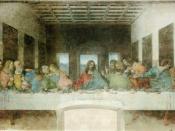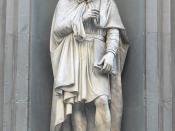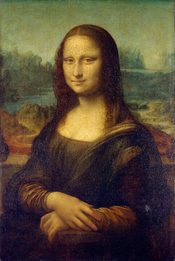It is not unreasonable to say that Florence is a model of Renaissance culture. Although the Renaissance was a rebirth that occurred throughout almost Europe, the place that the Renaissance first arose was in Italy, Florence. This city standing on the main road connecting Rome with the north is not huge; it is often in comparison with Rome as well as David with Milanese Goliath. Florence, not Rome, produced a tradition of art, explosion of architecture, sculpture, philosophy and learning that stretched throughout the century.
In the fifteenth century, Florence was the center of trade of cloth, primarily wool. Nonetheless, Florence was not a port city like Venice, sea trade was not the only source of its income. Under the control of representatives of the major trade guilds, especially the Medici family from 1434 to 1492, Florence also was the center of the European banking system. The gold florin minted in Florence was known as the standard coin throughout Europe for centuries.
On the grounds of FlorenceÃÂs strong economics and its political philosophy, this small city thrived exceptionally.
The humanism in Florence changed strongly. Cosimo deÃÂ Medici, who collected and copied ancient manuscripts, was the FlorenceÃÂs wealthiest and most influential citizen. His grandson, Lorenzo de Medici known as ÃÂthe MagnificentÃÂ, a great patron of the arts, commissioned works by Michelangelo Buonarroti, Leonardo da Vinci, and Sandro Botticelli. Lorenzo was not only an accomplished poet but also a political, a social leader and a musician. Moreover, he invited some of the most famous composer of the day to Florence, including the great Flemish composer Heinrich Issac.
In spite of the strong movements in humanism in Florence, Florentines were also concerned about their spiritual life. Fra Savonarola, a Dominican preacher and reformer, influenced unlimitedly to the exploited workers in the city.


